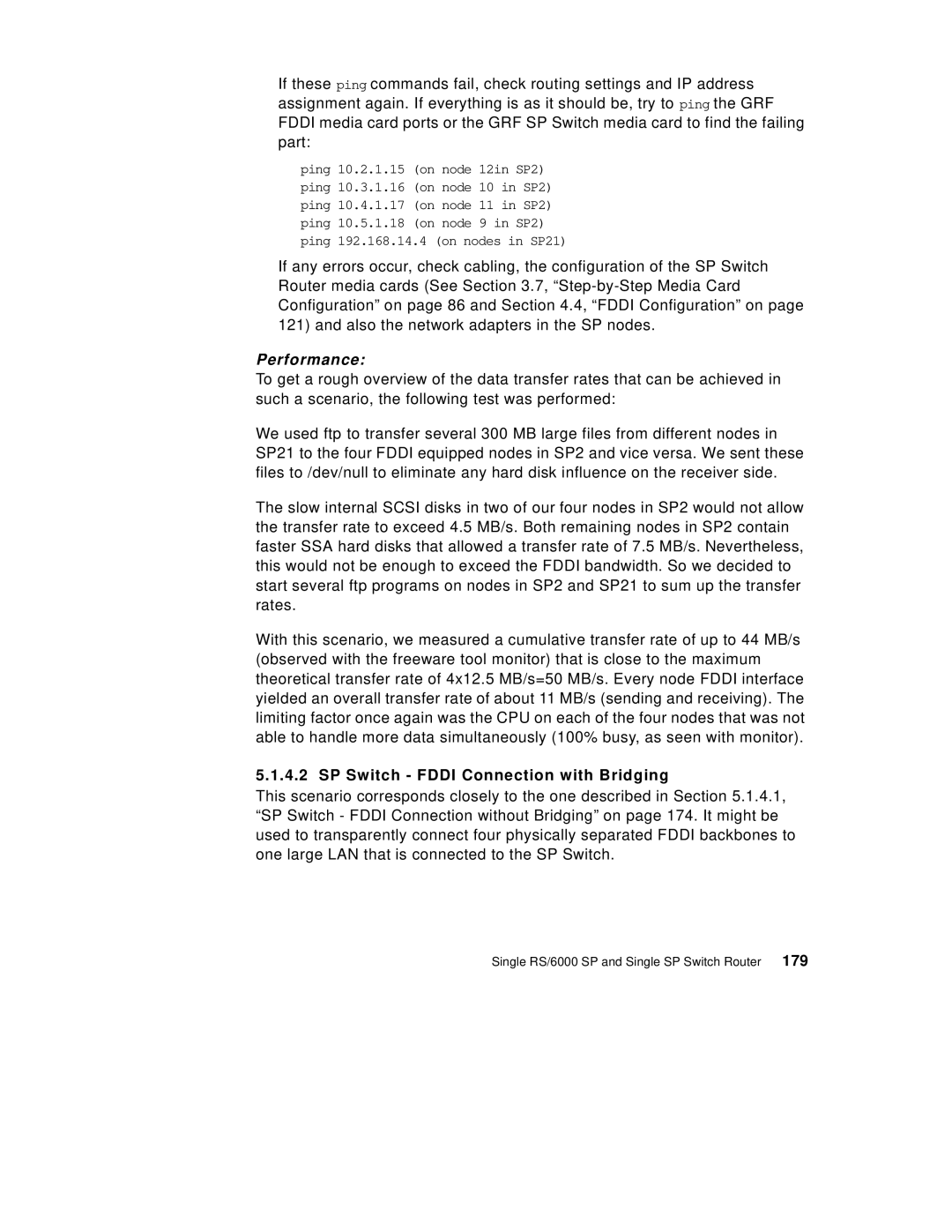If these ping commands fail, check routing settings and IP address assignment again. If everything is as it should be, try to ping the GRF FDDI media card ports or the GRF SP Switch media card to find the failing part:
ping 10.2.1.15 (on node 12in SP2) ping 10.3.1.16 (on node 10 in SP2) ping 10.4.1.17 (on node 11 in SP2) ping 10.5.1.18 (on node 9 in SP2) ping 192.168.14.4 (on nodes in SP21)
If any errors occur, check cabling, the configuration of the SP Switch Router media cards (See Section 3.7,
Performance:
To get a rough overview of the data transfer rates that can be achieved in such a scenario, the following test was performed:
We used ftp to transfer several 300 MB large files from different nodes in SP21 to the four FDDI equipped nodes in SP2 and vice versa. We sent these files to /dev/null to eliminate any hard disk influence on the receiver side.
The slow internal SCSI disks in two of our four nodes in SP2 would not allow the transfer rate to exceed 4.5 MB/s. Both remaining nodes in SP2 contain faster SSA hard disks that allowed a transfer rate of 7.5 MB/s. Nevertheless, this would not be enough to exceed the FDDI bandwidth. So we decided to start several ftp programs on nodes in SP2 and SP21 to sum up the transfer rates.
With this scenario, we measured a cumulative transfer rate of up to 44 MB/s (observed with the freeware tool monitor) that is close to the maximum theoretical transfer rate of 4x12.5 MB/s=50 MB/s. Every node FDDI interface yielded an overall transfer rate of about 11 MB/s (sending and receiving). The limiting factor once again was the CPU on each of the four nodes that was not able to handle more data simultaneously (100% busy, as seen with monitor).
5.1.4.2 SP Switch - FDDI Connection with Bridging
This scenario corresponds closely to the one described in Section 5.1.4.1, “SP Switch - FDDI Connection without Bridging” on page 174. It might be used to transparently connect four physically separated FDDI backbones to one large LAN that is connected to the SP Switch.
Single RS/6000 SP and Single SP Switch Router 179
